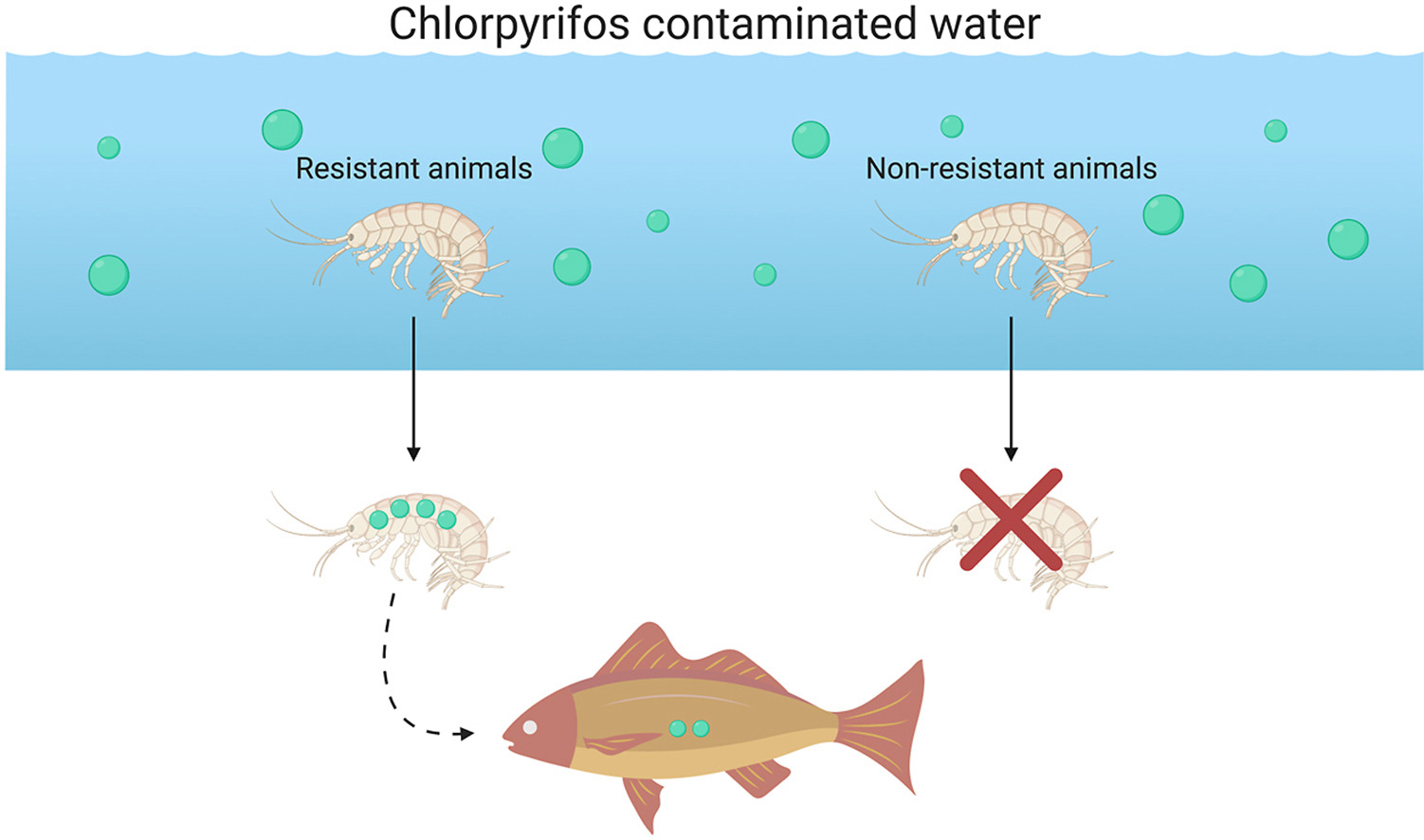Written by Elyse DeFranco
 The toxic effects of insecticides sprayed on Delta farmlands don’t stop at the pests they seek to target. Draining into the watershed via runoff, these chemicals then impact the aquatic invertebrates that fish depend on for food. A new study found that the common insecticide chlorpyrifos is accumulating in one such fish prey species, and that increasing exposure to the chemical causes genetic changes that induce resilience. While this leads to higher survival rates at polluted sites, it also means that they are building increased concentrations of the contaminant to pass up to the fish consuming them, as well as humans and other animals that eat the fish. Pesticides are known to cause endocrine disruption, liver damage, and decreased growth rates in fish, which could be amplified by consuming prey species with higher concentrations of contaminants. “Resistant animals that survive higher concentrations can accumulate higher concentrations of chlorpyrifos in their tissues, up to 50 times more,” says study author Nadhirah Johanif, who conducted the research for her Master’s thesis.
The toxic effects of insecticides sprayed on Delta farmlands don’t stop at the pests they seek to target. Draining into the watershed via runoff, these chemicals then impact the aquatic invertebrates that fish depend on for food. A new study found that the common insecticide chlorpyrifos is accumulating in one such fish prey species, and that increasing exposure to the chemical causes genetic changes that induce resilience. While this leads to higher survival rates at polluted sites, it also means that they are building increased concentrations of the contaminant to pass up to the fish consuming them, as well as humans and other animals that eat the fish. Pesticides are known to cause endocrine disruption, liver damage, and decreased growth rates in fish, which could be amplified by consuming prey species with higher concentrations of contaminants. “Resistant animals that survive higher concentrations can accumulate higher concentrations of chlorpyrifos in their tissues, up to 50 times more,” says study author Nadhirah Johanif, who conducted the research for her Master’s thesis.
Published August 2021 in the journal Environmental Pollution, the study used the freshwater amphipod Hyalella azteca as a focal species. An abundant species across North America, they provide a good model for assessing ecotoxicology because of their continuous contact with sediment and high tolerance for temperature and salinity variability. The chlorpyrifos-resistant specimens used in the study were collected from Ulatis Creek, which drains into the Cache Slough and represents a confluence of urban and agricultural runoff into the Delta.

Another study published in 2020 found that the resistance to chlorpyrifos in H. azteca is caused by a mutation that replaces the amino acid glycine with serine in a specific gene known as ace-1. This gene produces the enzyme acetylcholinesterase, which plays a role in neurotransmission and is targeted by organophosphates, producing the intended toxic effects.
Chlorpyrifos is one of several organophosphate pesticides, all of which are toxic and potentially lethal to people. Potential harms of its use in agriculture, including developmental harm to children, have been debated in the U.S. for years. California banned use of chlorpyrifos on crops as of January 2021, and an August decision by the EPA has led to a nationwide ban that takes effect in 2022. Although these recent developments will decrease the amount of chlorpyrifos found in the ecosystem, this study demonstrates the potential ecological impacts that stem from bioaccumulation of agricultural pesticides, many of which continue to be used.
Link to study: https://doi.org/10.1016/j.envpol.2021.117900
Produced by Estuary News Group



